Katu Mirim, Brazil
“Though I was born in 1986 I carry with me more than 500 years of resistance,” are the opening words of Katu Mirim’s album, Revolta. They set the scene for the uncompromising lyrics that follows, an assault on colonisation, slavery, inequality, homophobia, and other injustices that beset Brazil five centuries after Portuguese conquistadores arrived.
Mirim is a rapper, songwriter, actor, activist and model. The 36-year-old is also a lesbian and a mother.
Adopted by a white family in São Paulo, she found out about her Indigenous roots when she was 13, and spent years trying to pass as white before discovering who she really was. Trips to the Guarani Mbya and Bororo-Boe Indigenous communities helped spark her activism and music.
Her first single came out in 2017 and she released several more songs before Revolta hit the streaming platforms this year. The album – whose title translates as rebellion or mutiny – confirmed her as a voice for Brazil’s Indigenous people, especially for the often overlooked city-dwellers.
“People know a lot about indigenous peoples in the Amazon but not a lot about indigenous people in São Paulo and rap is a weapon to fight that,” she says. “My music speaks of the indigenous cause in an urban context, it is a denouncement of the genocide and the way original peoples here in Brazil have been forgotten.”

In 2019, she founded the Tibira collective, a social media network dedicated to promoting LGBTQ+ Indigenous people, and she has tried to act as a bridge with employers.
Shaven-headed, with face and neck tattoos, she revels in what she gleefully calls “her provocations”.
“White flags don’t work any more,” she sings on one song. “I want revenge. My rebellion is knocking at your door and you are going to open it.”
She has a new single out this month and has worked with Facebook and appeared on some of Brazil’s biggest TV shows, although she remains critical of the country’s cultural gatekeepers. Her diary is full every April on the Day of the Indigenous Person, but has space the rest of the year.
“When it comes to Indigenous peoples, there is huge room for improvement in cultural production,” she says. “Indigenous people exist and are present in contemporary music. Not giving us an opportunity is a totally racist act.”
Andrew Downie
Renata Flores, Peru
Renata Flores is a Peruvian singer-songwriter whose work, most sung in Quechua, the Inca language spoken by at least 4 million people in Peru, is at the forefront of a cultural revolution in the Andean state.
Flores, 21, is a pop artist but her music is complex – R&B, hip-hop, Latin trap and rocklayered with Peruvian and indigenous rhythms.
She first caught the country’s attention at 14, when she took part in TV talent show La Voz Kids. Her Quechua-language version of the Animals’ The House of the Rising Sun did not win but the response was massive.
Her next recording, a soulful Quechua version of Michael Jackson’s The Way You Make Me Feel, had a similar impact and she began to restyle songs by artists such as the Police, Dua Lipa and BTS.
Flores started songwriting in 2017 and, as her confidence has grown, her lyrics have become more political. Violence against women, the environment, and the Shining Path terrorist campaign of the 1980s and 90s (her grandmother, then a rural teacher, was one of the multitudes who had to flee the family home in Ayacucho) are all covered.
But it’s her Quechua roots that form the heart of her music and style.
“People said to me you have to choose, be either from the city or from the country, but I had to fuse them,” she said. “That’s my style now, with our Andean music and customs, and the more modern, urban part.”
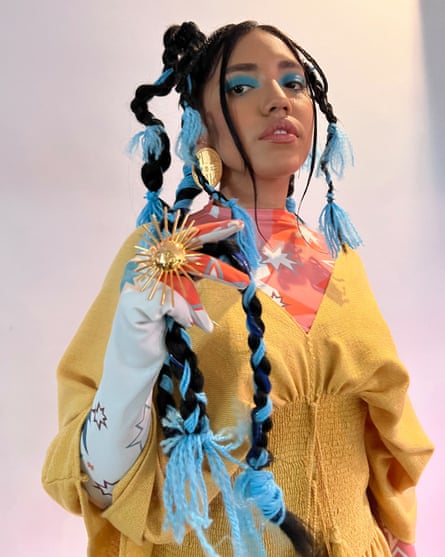
That mix is summed up in the song Tijeras, or Scissors, named after a competitive dance popular in Quechua villages. The video fuses the ancient and the modern, featuring women in indigenous dress playing harps and violins on hillsides, and crop-topped dancers and urban murals. Flores sings in front of a banner reading “Women United for Justice”.
That artistic dexterity has won her acclaim across a hemisphere where indigenous peoples all suffer similar discrimination to the Quechua. The magazine Hola! USA named her one of the 100 Most Influential Latinas in 2021 and, this year, Forbes magazine declared her one of the 50 Most Powerful Women in Peru.
“Renata and other artists are very vocal in pointing out that this is not just about the music, it’s about recognising culture, overcoming discrimination and putting some social issues on the agenda,” says Américo Mendoza-Mori, head of the Quechua Initiative on Global Indigeneity at Harvard University.
She released her first album last year and has another due out in 2023. Her latest single, Junto Sonamos Mejor, sung in Spanish and Quechua, has a video that offers subtitles in 23 languages.
“There is so much to say and so much still be done,” says Flores. “I feel like my voice is speaking for a lot of people who are not heard and who are still not seen as important. That’s what bothers me and that’s what I try and explain in my songs.”
AD
Moko Koza, India
Growing up in Nagaland, Moko Koza often felt that the issues of this small state in north-east India went ignored by the world. For more than five decades, Nagaland, whose 2 million inhabitants are largely from tribal communities, was home to a violent separatist rebellion fought between the ethnic Nagas and the Indian government.
Though a ceasefire was declared 25 years ago, the issues of autonomy of the Naga people remain unresolved, with underground tribal armies still in conflict and a heavy Indian army presence in the state.

Koza grew up in a household full of traditional Naga music. As a teenager, his discovery of the US rapper Eminem opened his eyes to a new way to express his frustrations at the violence and exploitation that blighted life in Nagaland.
“My music is related to society and the reality of life in Nagaland,” he says. “According to the government, Nagaland is a disturbed area that needs to be militarised. But actually the people want to live in peace and harmony and it’s political issues causing the disturbance. They wanted to take control of Nagaland and that’s why there has been violence. My music was a way to speak up.”
Koza began performing while he was studying anthropology, a degree he says deepened his interest in writing socially engaged music. When he graduated in 2019, he decided to become a full-time rapper. He began recording his own songs, written in a combination of English and two local dialects, Nagamese and Tenyidie, and shared them online.
In his song Boy from the Hills, he spoke about celebrating his Naga ancestry and growing from “the soil that was stained by the armies”, while Tribally Savage addressed the violence inflicted during the ethnic conflict in the 1960s and 70s.
His biggest hit came with the release of Made in Nagaland.
It addressed a multitude of issues for the people of Nagaland, from police violence and extortion by militias and the church, to the state’s long-running ban on alcohol, which had led to a dangerous underground trade.
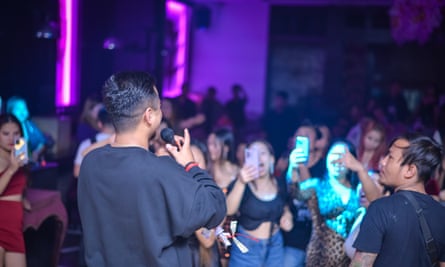
The government is drunk. Where’s the legislation? / Corrupted by the money, you don’t care about economy / Church into politics, now what’s my religion?
“Everyone in Nagaland knows this is happening but people don’t have a platform to speak about it,” says Koza. “So I felt like music was one thing where I can address all those issues. Music is one way I can let it all out and let people know what’s going on.”
His songs also addressed an incident in December 2021 in which the Indian army special forces mistook a group of people returning from work for rebels and killed six. It caused outrage in Nagaland, bringing focus back on to the Armed Forces (Special Powers) Act, which has been imposed on the state since the 1950s and allows soldiers to act with impunity.
“This war is still going on,” said Koza. “So many Naga people have died because of the army, so many innocents blindly killed like last December. I want people to realise that these things are happening and pay attention.”
Since his career began to take off, Koza has found himself performing in front of the government and army officials his songs criticise. “It makes me feel very tense,” he says. “But I know that I have to do it, they need to hear these messages.”
Now signed to a Delhi record label, he released his debut album this year. He has already toured across India, and Thailand, and had a homecoming in Nagaland this month when he played at the state’s Hornbill festival to a sold-out crowd. As the final line of Made in Nagaland says: “Voice of the streets, I do it for my people.”
Hannah Ellis-Petersen
Pat Boy, Mexico
The musical career of Pat Boy, real name Jesús Pat Chablé, took off when he switched from Spanish to his native Mayan. Chablé grew up speaking Mayan within his small-knit community in the state of Quintana Roo in south-east Mexico, but Maya rap didn’t exist. “I’d heard Spanish, English, French, even Japanese rap, but never Mayan. Listening to Maya reggae, I realised there was room for Maya rap,” he says. “Not only did the words flow and the rhymes work better, but the music was also warmly received.”
Mayan has helped his music find an audience in an otherwise crowded genre, making itself at home not just among Mexico’s Maya youths, but also farther afield in the US, after his song Sangre Maya (Maya Blood) – a collaboration with his friend, the late rapper El Cima – went viral. To date, the video clip has amassed more than 211,000 views.
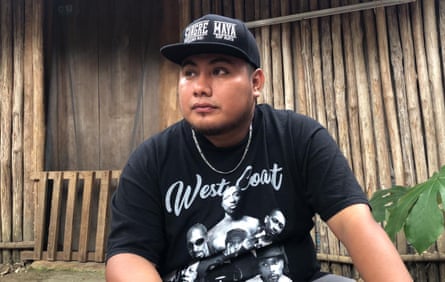
Pat Boy’s music details the daily life of Mayas, their loves and struggles – although songs such as El Vicio Es Muy Malo (Addiction Is Very Bad) “are universal”, he says.
His YouTube channel is a springboard for Maya culture and cuisine, as his video on how to cook traditional Maya chicken demonstrates, and he has become an unlikely ambassador for the Mayan language. “I want youngsters to realise what it means to be Maya and to understand we come from a great Maya civilisation,” he says.
Pat Boy spent two years working on government-funded workshops using rap in teaching Mayan to children, and reconnecting them with their culture. He insists he is part of a wider movement: “People are beginning to understand the value of being able to speak Mayan.”
While he works on his sixth solo album, due early next year, his record label, ADN Maya, is this month releasing an album of Maya tongue twisters and wisdom performed by a range of artists.
Pat Boy also features on the soundtrack of the second Black Panther film, Wakanda Forever. The song Laayli’ Kuxa’ano’one (We’re Alive), a collaboration with fellow Maya rappers Yaalen K’uj and All Mayan Winik, blends jungle with hip-hop.
Now I take care of Maya culture … / You know who I am / The mother tongue / That lives in the Yucatan peninsula.
Soraya Kishtwari
Embera Warra, Colombia
Brothers Walter and Gonzalo Queragama, now 23 and 25, moved to Bogotá five years ago after violence forced their family to leave Bagadó, a small town in Chocó, western Colombia. At one point, they were among the 1,350 Emberá displaced people camped in Bogotá’s national park.
“We spent nine months living in the park,” says Walter. The displaced came from territories in the states of Chocó, Cauca and Risaralda that are key illegal mining and drug trafficking routes. Despite overcrowded conditions, the park was preferable to living caught between armed groups and security forces.
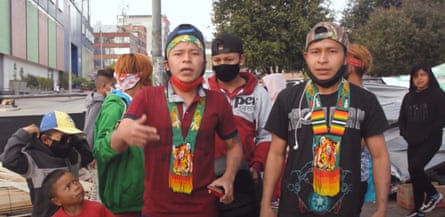
Until their arrival in the Colombian capital, the brothers had never listened to rap music. Then came a chance encounter with buskers on the TransMilenio, the city’s bus rapid transit network.
“At first, it seemed strange, it sounded like nothing I’d ever heard before,” says Walter. Having recently arrived in Bogotá, the siblings didn’t understand what was being sung – Spanish remains very much their second language. “But then we realised how rap lent itself easily to the spoken word. And for me, the spoken word is about storytelling, and we have many stories to tell.”
With that goal in mind, Embera Warra (Sons of the People, or Indigenous Sons) was born, supported along the way by groups like the Colectivo Embera Bakata, a Bogotá-based collective of Indigenous artists. Singing in their native Katío, the brothers have written and recorded six songs, each one a hymn to their community and injustices they have faced. Traditional instruments and lyrics of their grandparents’ generation combine with rap to create a new sound.
After several moves, the Queragama family is now in La Rioja, a temporary housing solution that residents have complained is substandard. For his part, Walter says conditions are better than before, although there is room for improvement. “The government is finally helping and we have food to eat and I’m finally able to study,” he says.
Walter has started a six-month music and arts programme, after securing a grant. Asked if he sees himself ever returning home to Chocó, he is clear: “No, we’re better off here in Bogotá. Back home, between the National Liberation Army and the military, there’s nothing left to go back to.”
According to the brothers, out of sight is out of mind. “If we go back, we’re forgotten about,” Walter adds. “Left to fend for ourselves. Now that we’re here, we can’t be ignored any more.”
SK
Cat Monzón, Guatemala
As a teenager growing up in the mountains of Guatemala, Cat Monzón listened to Spanish and American rap on MTV, and dreamed of working in film or TV. It never occurred to her that she could sing herself. But when she moved to the city of Quetzaltenango for high school she met the 13Lunas collective, who not only introduced her to rap and hip-hop culture, but encouraged her to write her own lyrics.
“I liked to write and although I had no musical training, my friends taught me to make rhymes, to throw verses, and have little freestyle battles,” she says.
13Lunas rap about the political situation in Guatemala, the 36-year civil war, massacres against the Indigenous population, and recovering the memory of their people.
Monzón, whose rap name is Yosoy, sings in a mix of Spanish, English and K’iche’, her mother language. In Piel de Reina (Queen’s Skin) she expresses hope that “one day our president will be a peasant Maya woman”, but joy is as important to her as politics.
“I like reggaeton and rap but I also like to dance, so I want to rap about my people but also about shaking my hips,” she says. “It’s valid, it’s part of life. I don’t have to talk about serious things all the time.”
Making music in Guatemala is not easy. Most emerging artists, including Monzón, self-finance their projects.
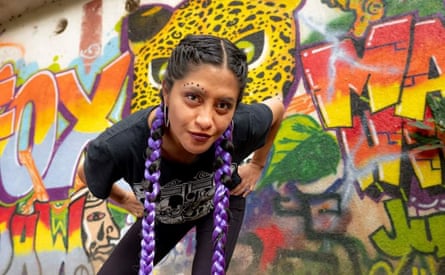
“Eighty-five per cent of my songs were recorded with free tracks from YouTube, with homemade equipment and not of very good quality due to lack of financial resources,” says Monzón.
She has recorded only two tracks in a professional studio. The last time she appeared publicly was during a demonstration in July 2021. “There was a national strike against the current government. In my town, a small group held a demonstration and I improvised something and sang. It always draws attention to see a woman rapping,”
Today Monzón is part of the all-female Colectiva Urbana group of rappers and graffiti artists.
“My goal is not to be a superstar, but to leave a message, an image or a song with people, to convey my feelings,” she says.
Jody García
Stay connected with us on social media platform for instant update click here to join our Twitter, & Facebook
We are now on Telegram. Click here to join our channel (@TechiUpdate) and stay updated with the latest Technology headlines.
For all the latest Music News Click Here
